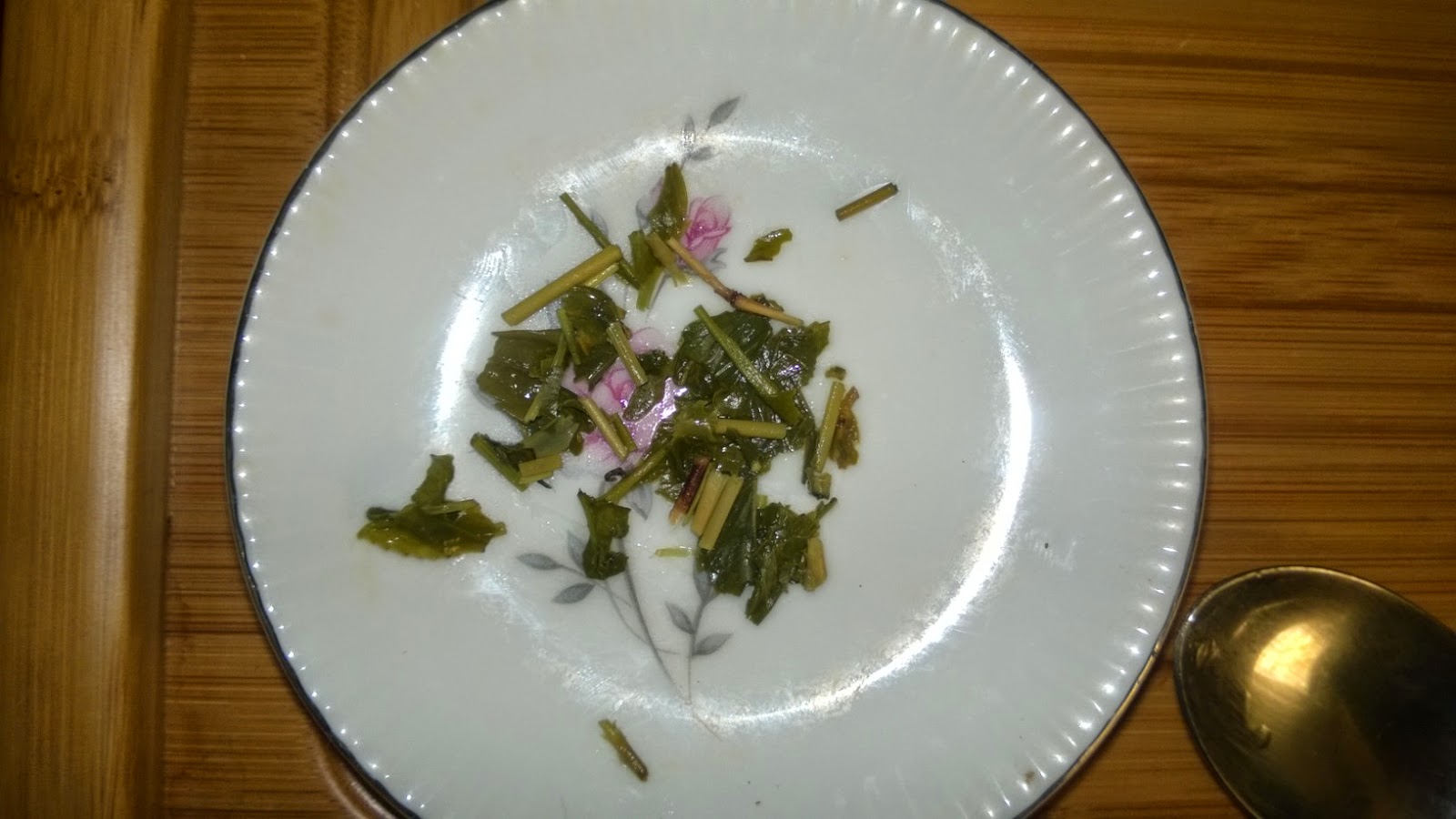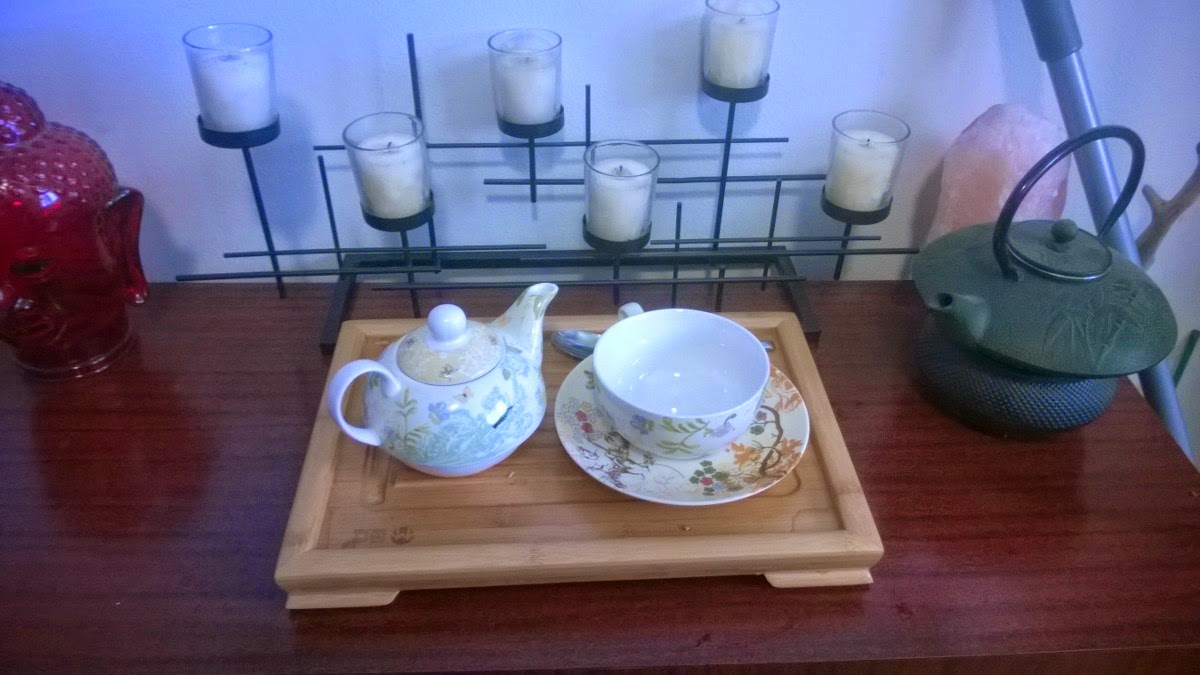So I’ve been drinking
What-Cha’s Discover Russia Premium Non-Black sampler, and I have been surprised by how much I like some of the
teas. I decided to post all my thoughts in one post rather than in multiple because
I only had enough tea to formulate my first impressions.
Before I get to my impressions on the tea, I have to state
that these are my first Russian teas; I’ve had Russian Caravan before, but I never had loose leaf Russian teas before.
Krasnodar Host Tea Estate Oolong Tea
The dry leaves on this particular tea can be quite wide and
flattened to thin and twisted. I brewed 185°F for five minutes. The liquor was
quite dark brown-orange. It had a slightly grassy aroma as well as a mild woodsy scent and a really fruity taste, although it tasted very similar to a
run of the mill Russian Caravan tea, but it lacked the smoky Lapsang Souchong
taste. There was a moderate tobacco taste edge to this tea that lingered.
If this tea was sold individually I probably would not buy
this particular tea, I don’t particularly like teas that taste like tobacco. Although this is a nice tea that straddles the line between oolong and
black, you may enjoy it.
Krasnodar Host Tea Estate Yellow Tea
Like most of the other teas in this sampler, the dry leaves
are quite dark for non-black teas, and have some lighter browns. The leaves
feel a little like crispy bark. I brewed at 176°F for four minutes; this
produces very dark golden-amber liquor. There was a slight aroma, although it
was too minor for me to identify. There was a very sharp taste to this tea that took me a couple minutes to
identify. At first I was thinking something acidic, but then I realized it has
a watered down lemon juice taste, I have to note that this is not an acidic
tea, but is very reminiscent of one. I also noticed a dry hay taste to this tea.
I enjoyed this tea, and would probably buy this tea if it
was sold individually. This is a definitely a yellow tea, between a white and a
green, although if I tasted it blind I would probably say it is a green. This
is definitely an everyday type of tea that should pair well with most foods.
Krasnodar Host Tea Estate Green Tea
The dry leaves were olive green and a very dark green; the
leaves were twisted although there were a couple flattened leaves and a few
light stems. I brewed at 176°F for two minutes this produced a tea with a very
light yellow liquor. The taste was mostly grassy, but I could taste an intense
sweet peach edge to it as well.
I loved this tea. I would definitely buy it if it was sold individually,
although I don’t think it is the type of tea I would drink often; it felt very
much like a tea to enjoy on a hot summer day.
Krasnodar Solohaul Tea Estate Green Tea
The leaves were dark with a little olive green mixed in, and
were flat and looked like thin strips of tree bark. This time I brewed at 176°F
for three minutes, it produced yellowish liquor. The major taste was nectarine
although there was a grassy finish that I quite enjoyed.
This felt like a better
version of the Krasnodar Premium Dagomys Tea Estate Green Tea and I definitely would
purchase it again, which may be ironic because I have the least to say about
this tea.
Krasnodar Premium Dagomys Tea Estate Green Tea
Like all the others the leaves are considerably darker then
what you would expect for a green tea and the leaves are twisted, although the
leaves were softer than the others in this sampler. I want to say the leaves
had a crumpled look to them, the dry leaves reminded me very much of crumpled
velvet. I brewed at 176°F for two and half minutes. The liquor was light
yellow, there was a slight cherry aroma. The taste was very mellow, a little
fruity that was hard to narrow down, but there was a lingering grassy
aftertaste.
I probably would not buy this tea, like the other premium
tea in this sampler it had a very light taste, too light for me. This felt more
like a white then a green to me.
Krasnodar Premium Solohaul Tea Estate Green Tea
The dry leaves were long thin strips that were light olive
green and a little rusty brown mixed. This was the only tea in this sampler
that was not twisted. I brewed at 176°F for three minutes. It didn’t have much
of an aroma, although I wouldn’t say any of these teas had an easily
identifiable aroma (I had a hard time smelling most of these teas). There was a
light grassy taste and nothing else.
I wouldn’t buy this tea again; I don’t know what is wrong with the two teas with premium in their names being so light. I saved the premium teas for last, but the real quality was in the yellow and green teas in this sampler without premium in their names.
Overall I enjoyed sampling these Russian teas and do not
regret trying any of them. I am interested in why so many of thesethe dry leaves are
twisted so much. I did have second and third infusions with all these teas, but
I decided against posting my thoughts on them; I don’t know if Russian teas are
traditionally resteeped, but for the most part later infusions became weaker.
It was interesting that I couldn’t really smell the dry leaves and when brewed
these teas did not have a strong aroma.
.png)































































0 comments: